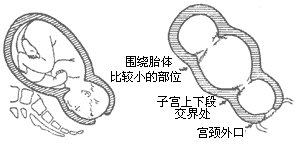| disease | Excessive Uterine Contractions |
The forces of labor include uterine contractions, abdominal wall and diaphragmatic muscle contractions, and levator ani muscle contractions, with uterine contractions being the primary force. During childbirth, abnormal uterine contractions are characterized by irregularities in rhythm, symmetry, polarity, or changes in intensity and frequency. Clinically, these abnormalities often result from obstructions caused by abnormalities in the birth canal or fetal factors, leading to increased resistance during the passage of the fetus through the birth canal and resulting in secondary abnormalities in labor forces. Clinically, abnormal uterine contractions are categorized into two types: insufficient uterine contractions and excessive uterine contractions, each of which can be further divided into coordinated and uncoordinated uterine contractions.
bubble_chart Clinical Manifestations
(1) Coordinated Uterine Hypertonus
The rhythm, symmetry, and polarity of uterine contractions are normal, but the contractions are excessively strong and frequent. If there is no resistance in the birth canal, the cervix dilates rapidly, and childbirth concludes in a short time, with the total labor duration being less than 3 hours, it is termed precipitate labor. This is more common in multiparous women.
Impact on Mother and Child
(1) Impact on the mother: Excessive and frequent uterine contractions and rapid labor can lead to cervical, vaginal, and perineal lacerations in primiparous women. Inadequate disinfection during delivery can cause puerperal infections. Poor retraction of uterine muscle fibers postpartum can easily result in retained placenta or postpartum hemorrhage.
(2) Impact on the fetus and newborn: Excessive and frequent uterine contractions affect the placental blood circulation, leading to fetal hypoxia in the uterus, which can easily cause fetal distress, neonatal asphyxia, or even death. Rapid delivery of the fetus and sudden release of pressure on the fetal head in the birth canal can lead to neonatal intracranial hemorrhage. Inadequate delivery care can easily cause infections in the newborn. If the baby falls to the ground, it can result in fractures or trauma.(2) Uncoordinated Uterine Hypertonus
1. Tetanic Uterine Contractions Tetanic uterine contractions are not due to abnormal uterine muscle tissue function but are almost always caused by external factors, such as obstruction after labor, inappropriate use of oxytocin, or placental abruption with blood infiltrating the uterine muscle layer, leading to tetanic spasmodic contractions in the uterine muscle above the internal cervical os. The mother experiences dysphoria, continuous abdominal pain, and refusal to be touched. Fetal position is unclear, and fetal heart sounds are indistinct. Sometimes, pathological retraction rings, hematuria, and other signs of impending uterine rupture may appear.
2. Uterine Spasmodic Constriction Ring (Constriction Ring) A ring-like constriction formed by spasmodic and uncoordinated contractions of a part of the uterine wall, which does not relax, is called a uterine spasmodic constriction ring. It often occurs at the junction of the upper and lower uterine segments or at a narrow part of the fetal body, commonly at the fetal neck or waist (Figure 1).

(1) Constriction ring around the fetal neck (2) Common locations of constriction rings
It is mostly caused by mental tension, excessive fatigue, inappropriate use of uterine contraction agents, or rough obstetric procedures. The mother experiences continuous abdominal pain, dysphoria, slow cervical dilation, stagnation of fetal descent, and irregular fetal heart rate. Vaginal examination can detect the constriction ring, which does not rise with contractions, distinguishing it from pathological retraction rings.
bubble_chart Treatment Measures
(1) Coordinated Uterine Hypertonicity
For women with a history of precipitous labor, it is advisable not to travel far 1-2 weeks before the due date to avoid accidents. If possible, they should be hospitalized in advance for delivery. Enemas should not be administered after labor. Preparations for delivery and resuscitation of neonatal asphyxia should be made in advance. During fetal delivery, the mother should not be encouraged to bear down. In cases of precipitous labor with insufficient disinfection or if the newborn falls to the ground, the newborn should be given an intramuscular injection of Vitamin K 1 to prevent intracranial hemorrhage, and a refined tetanus antitoxin of 1500U should be administered intramuscularly as soon as possible. Postpartum, the cervix, vagina, and vulva should be carefully examined, and any lacerations should be promptly sutured. If the delivery was not disinfected, antibiotics should be given to prevent infection.
(2) Uncoordinated Uterine Hypertonicity
1. Tonic Uterine Contraction Once tonic uterine contraction is diagnosed, uterine contraction inhibitors should be administered promptly, such as 20ml of 25% magnesium sulfate added to 20ml of 5% glucose for slow intravenous injection, or 1mg of adrenaline added to 250ml of 5% glucose for intravenous drip. If it is due to obstructive causes, an immediate cesarean section should be performed. If the fetus is dead in the uterus, ether inhalation anesthesia can be used. If the tonic uterine contraction cannot be relieved after the above treatments, a cesarean section should be considered.





